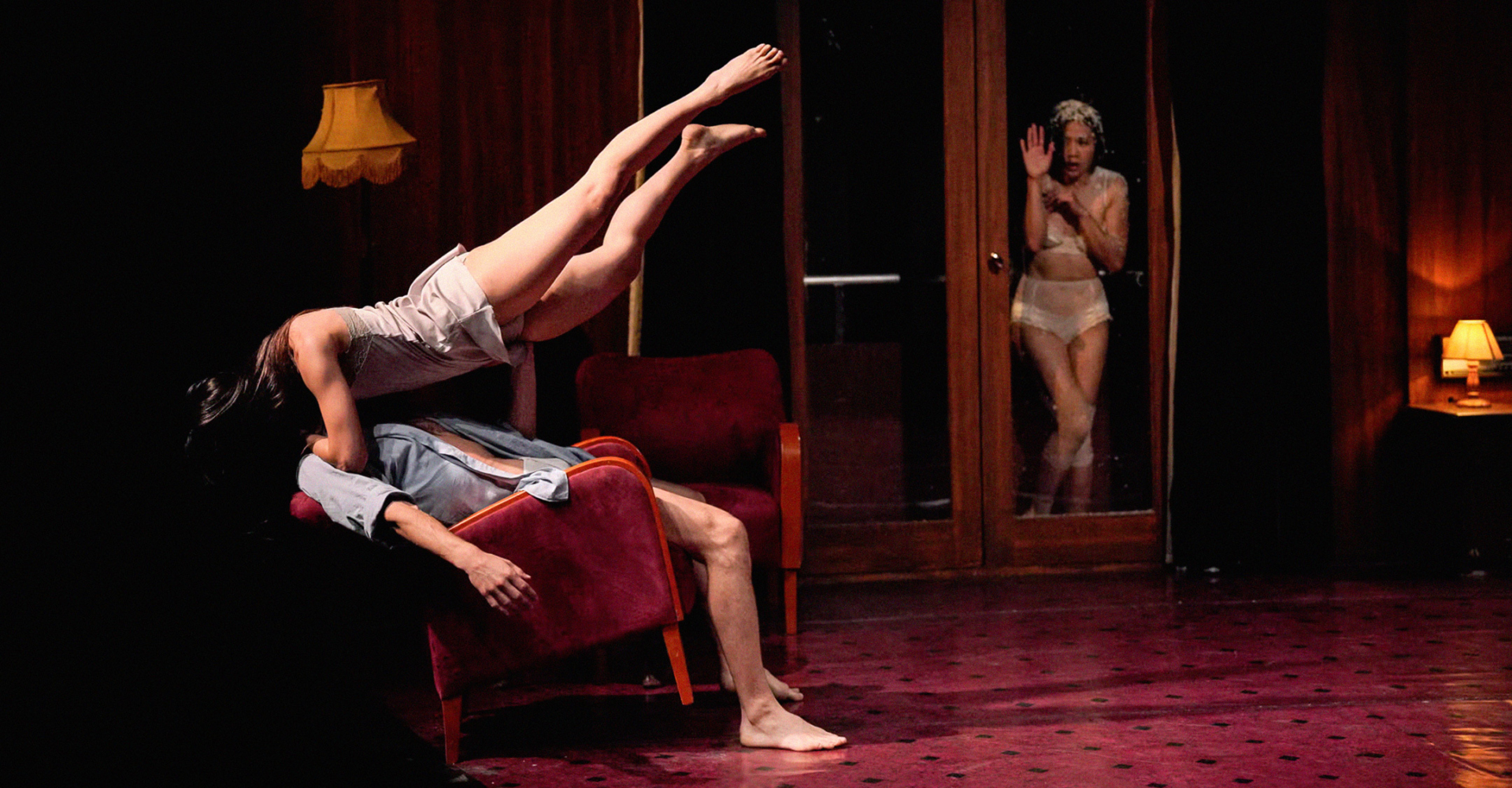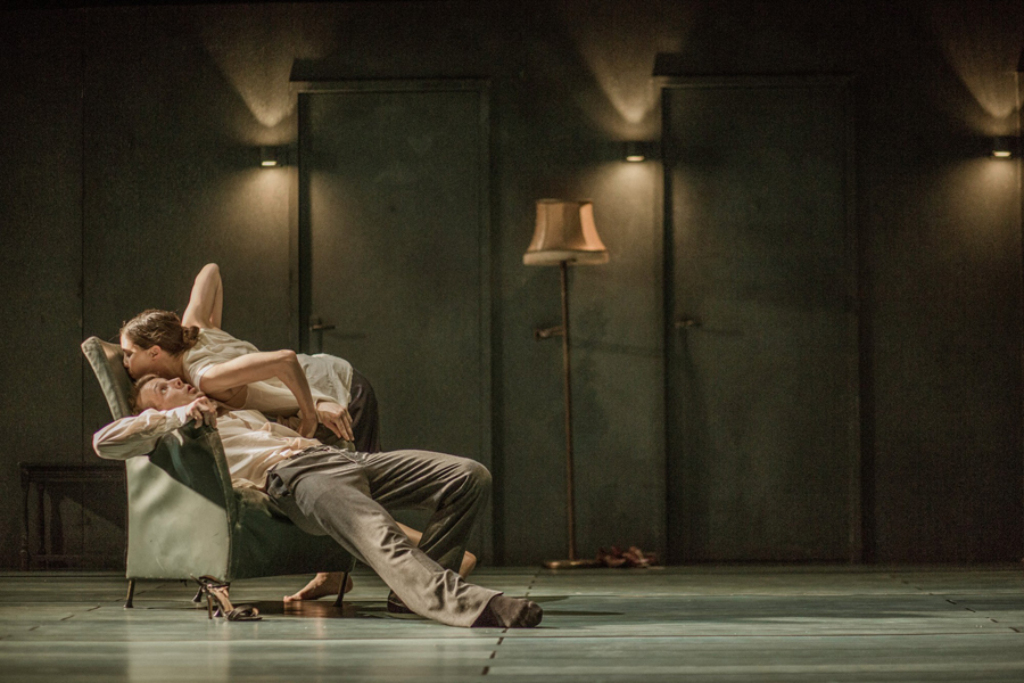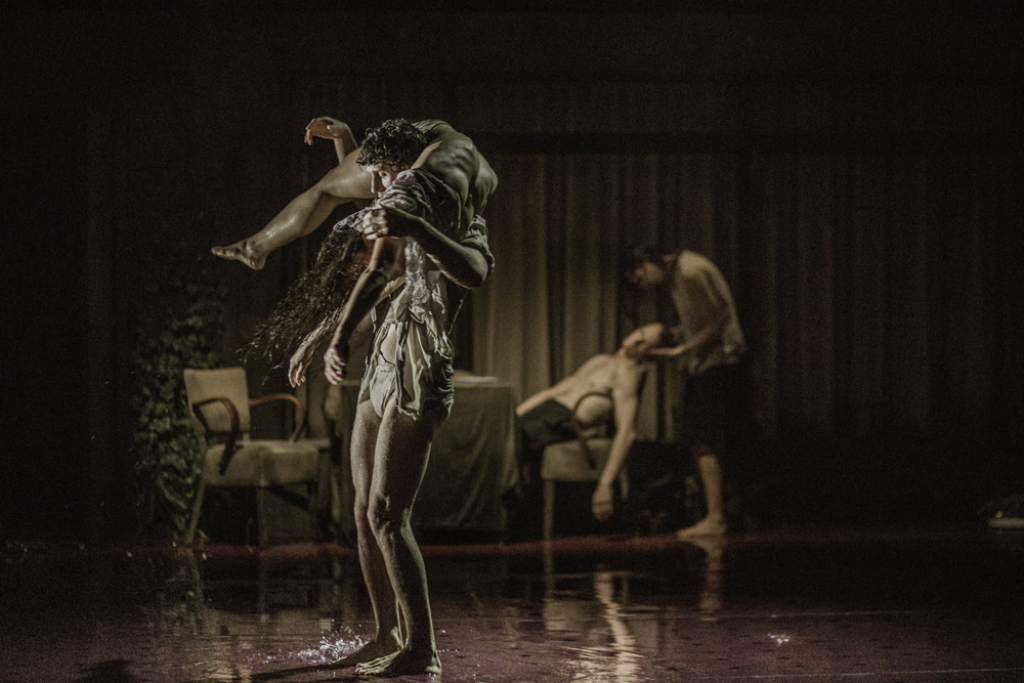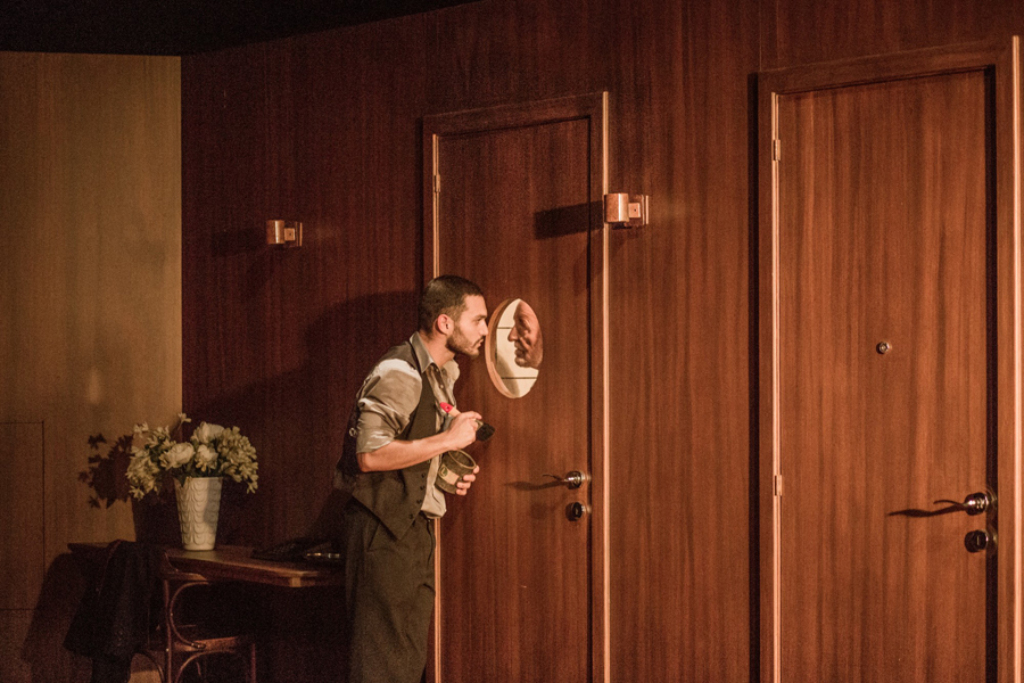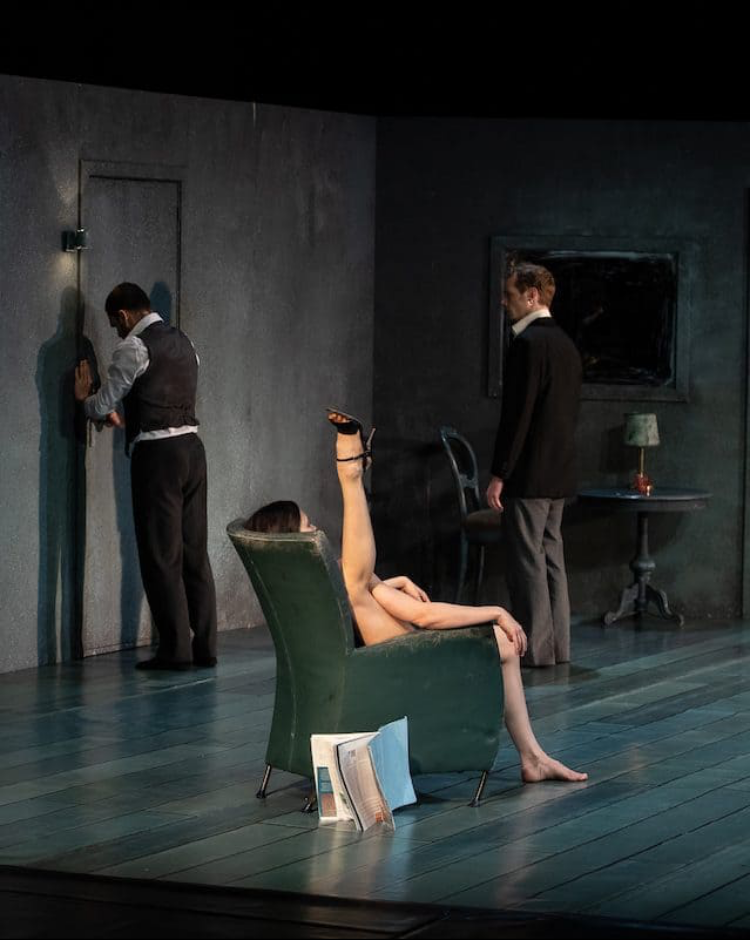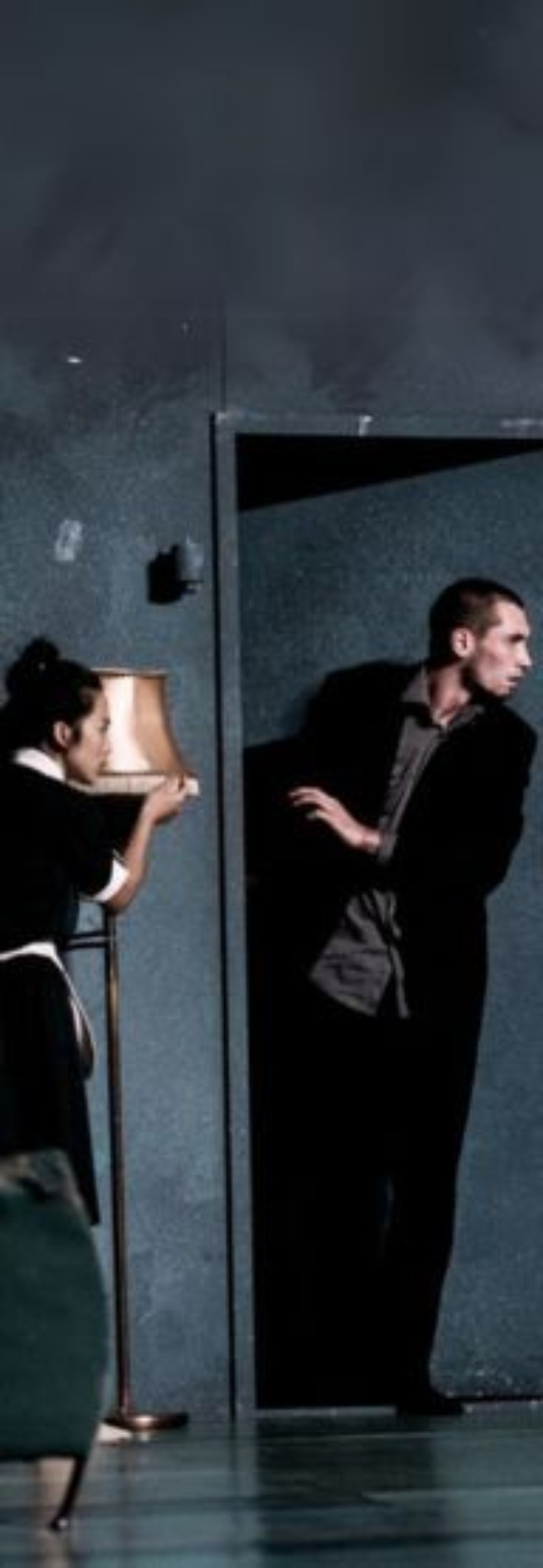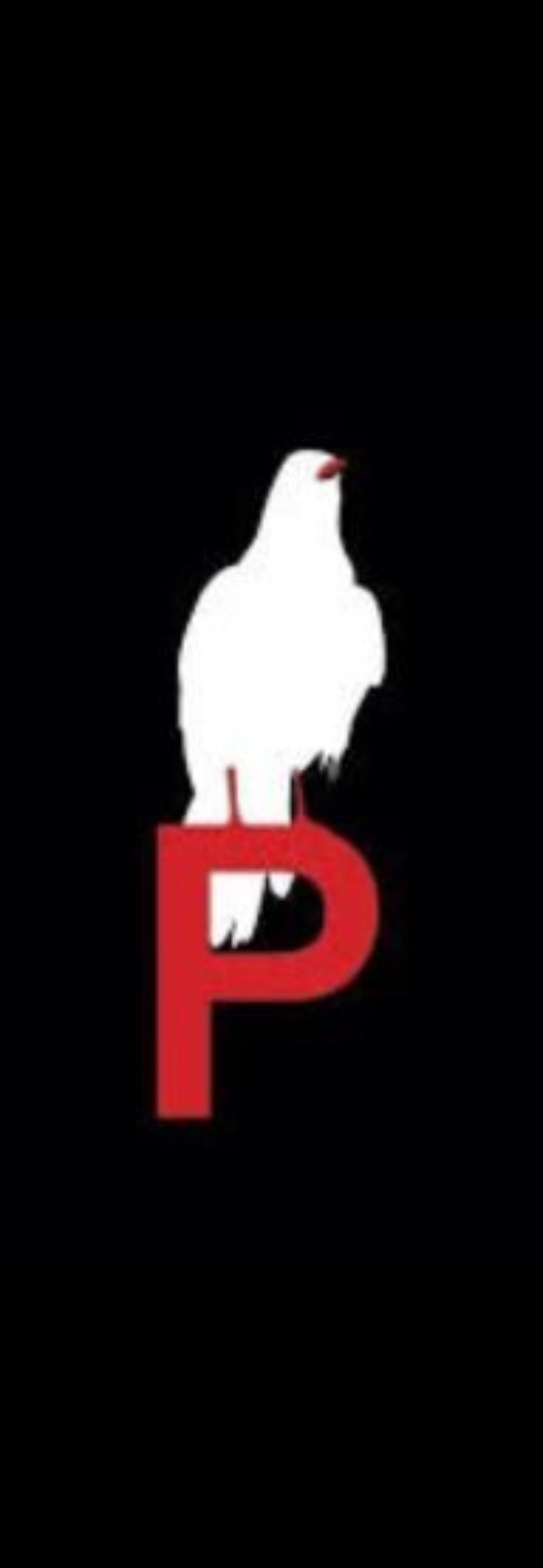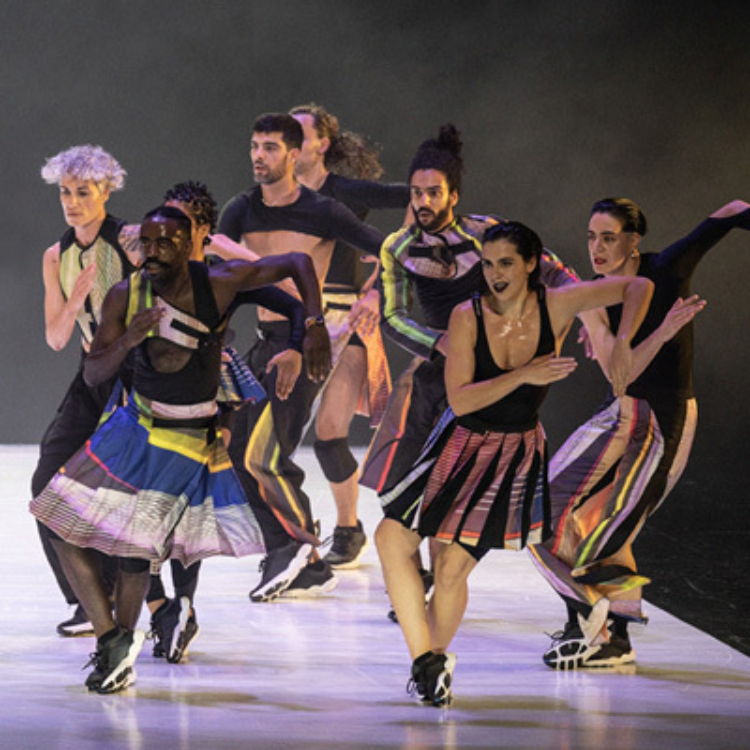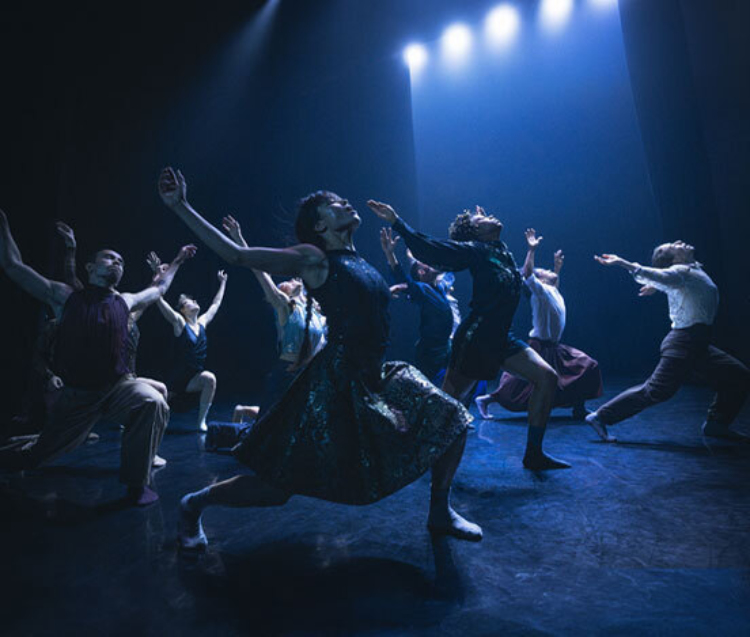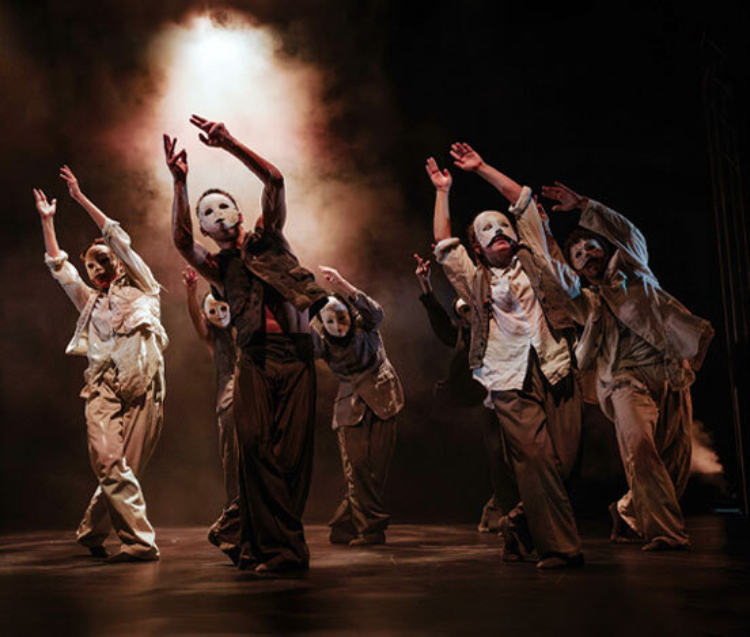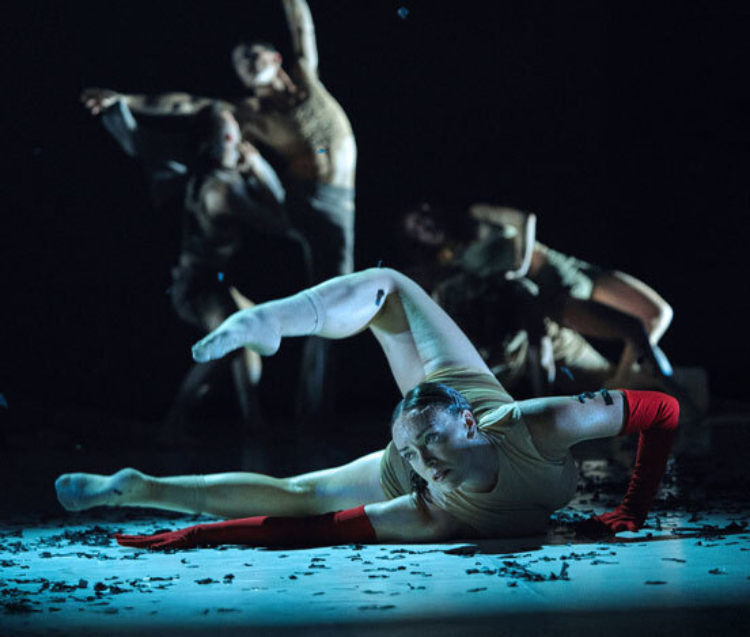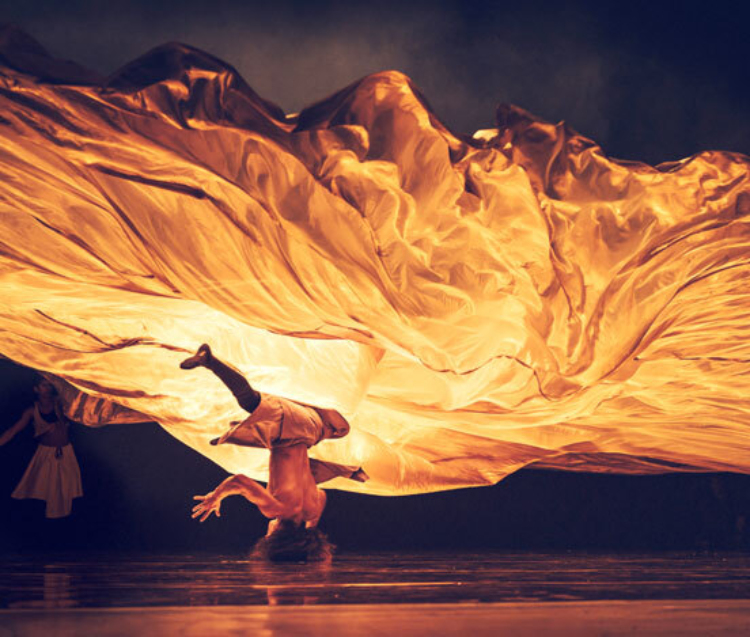A Word from Danse Danse
Dear audience,
What a joy it is to welcome you back with a company that never leaves anyone unmoved: Peeping Tom. Stepping into the boundless world of choreographers Gabriela Carrizo and Franck Chartier is an experience in itself — a striking journey through a realm that is at once uncanny, unsettling, and wildly inventive.
With Triptych, you won’t see just one, but three works in a single evening: three distinct worlds and three different settings — a living room filled with doors that won’t open, a ship’s cabin, and a flooded, abandoned restaurant — where reality gradually slips into the absurd and dreamlike. The staging is remarkably clever, with set changes happening in plain sight, as if on a film set. As for the performers, they deliver a performance of dizzying virtuosity, defying gravity itself.
It’s rare to see these three works presented together in one evening. We’re proud to be one of the few venues in North America able to offer you this unique opportunity.
Thank you for being here to share this moment with us.
Enjoy the discovery — and the journey into the world of Peeping Tom!
Pierre Des Marais - Artistic and Executive Director of Danse Danse.
__________
Territorial Acknowledgement
Danse Danse acknowledges that we are gathered on the traditional and unceded territory of the Kanien’keha:ka Nation. We honour the continued presence of Indigenous peoples on the Tiohtiá:ke (Montreal) territory, which has long served as a meeting place for exchanges between nations. With respect for the links to the past, present and future, we thank the Indigenous peoples for reminding us of the importance of living in harmony with ourselves, with each other and with nature, and we are grateful for the opportunity to present works of living art at Tiohtiá:ke.
About the Works
TRIPTYCH
The missing door, The lost room and The hidden floor
MEMORY AS LABYRINTH
As the lights comes on, the audience is plunged into a man’s mind: his life is passing before him like a film — or maybe it is the film of lives other than his, some past, others still to come. And so, in the cabins and hallways of an ocean liner, begins the labyrinthine voyage that is Triptych. In this trilogy, time, memory, and premonition revolve around the illusions, utopias, and lost loves of blinded characters who act out their own fiction. Uncontrollable forces set them adrift at each stage of their search.
In Triptych, the characters, lost in time and space, are continually drifting away and searching for one another. When they embarked on this voyage in pursuit of an ideal they were full of hope, but reality led them towards an uncertain destiny. They try to find a path through the wanderings of their thoughts while reviving and reliving their memories — or creating new versions of them, open to distortions. Triptych thus reveals a melancholy nostalgia for the future.
The characters’ inner quest is reflected in the scenography. They are isolated, lost in the encompassing darkness of the stage, in a labyrinth of missing doors, lost rooms, and hidden floors. The scenography was conceived as three successive film sets — a triple huis-clos in which the characters try in vain to create a new version of their illusory reality.
This filmic aspect manifests itself likewise in the show’s soundscape, which is dotted throughout with Foley effects: a falling glass, a door slamming, a beating heart, a metronome, the creaking and grinding noises of the ship. They act as so many anchor points while the characters are sucked in and ejected, while time vibrates, stagnates, fragments, and manifests itself differently for each of the figures onstage.
Gabriela Carrizo and Franck Chartier experimented with changing the filmic sets from one scene to the next in order to get the transitions to unfold as an autonomous dramaturgical force. Hence the man at the end of the second set, who remains alone on the large bed while the technicians work around him to mount the third. His chagrin expands exponentially, and literally becomes a puddle of tears, a theatrical “Lacrimosa.” In Triptych, this intermediary dramaturgy is an intimate part of the maze-like wanderings into the past and the future.
In the third and final set of Triptych, the old man’s mourning takes on mythic proportions: his puddle of tears becomes the ocean in which an ocean liner shipwrecks. For the passengers, their utopian voyage has turned to its opposite: the forces of dystopia have prevailed.
Triptych is a reworked version of three short pieces that Peeping Tom created for the Nederlands Dans Theater. Gabriela Carrizo directed the first part, The Missing Door, while Franck Chartier directed the two installments that followed, The Lost Room and The Hidden Floor. Carrizo and Chartier wanted to bring these pieces into the Peeping Tom repertory to be able to continue performing them. Together, the choreographers reimagined the pieces for the dancers of their company. In that sense, Triptych shows how different bodies, idioms, and working methods can not only overlap, but also mutually nourish one another.
Yet another layer is to be found in the new team of performers that Peeping Tom selected especially for the characters of Triptych. Carrizo and Chartier focused on the new group’s distinctive combination of technical qualities, which straddle both dance and theater. With their own physical vocabulary, the new dancers will trace new lines of memory, not only across Triptych, but across the company as well.
Artists
Company
Peeping Tom is a Belgian dance theatre company, founded by Gabriela Carrizo (I/AR) and Franck Chartier (F). Peeping Tom's main trademark is a hyper-realistic aesthetic, supported by concrete scenography: a retirement home for Vader (Père), two residential caravans for 32 rue Vandenbranden (2009) and a living room for Le Salon.
Credits
Triptych
Concept and direction Gabriela Carrizo and Franck Chartier.
Performance Konan Dayot, Fons Dhossche, Lauren Langlois, Panos Malactos / Akira Yoshida, Alejandro Moya, Eliana Stragapede, Wan-Lun Yu, Fanny Sage / Lucia Burguete Sierra.
Extra from Quebec Jean Belzil-Gascon.
Artistic assistance Thomas Michaux.
Sound dramaturgy Raphaëlle Latini.
Sound composition and arrangements Raphaëlle Latini, Ismaël Colombani, Annalena Fröhlich, Louis-Clément Da Costa, Eurudike De Beul.
Lighting design Tom Visser.
Set design Gabriela Carrizo, Justine Bougerol.
Costume making Seoljin Kim, Yichun Liu, Louis-Clément Da Costa.
Costume coordination Sara van Meer, Lulu Tikvosky, Wu Bingyan (intern).
Technical coordination Gilles Roosen, Giuliana Rienzi (creation), Pjotr Eijckenboom (creation).
Technical engineers Bram Geldhof, Ilias Johri, Jamy Hollebeke (lights), Tim Thielemans / Jonas Castelijns / Jo Heijens (sound).
Stage management Clément Michaux, Kato Stevens (stage assistant).
Stage production Lisa Gunstone, Robin Appels.
Tour manager Alina Benach Barceló.
Production manager Helena Casas.
Communications manager Daphne Giakoumakis.
Administration and production Rhuwe Verrept.
Administrator Veerle Mans.
Based on Adrift created with the dancers of NDT I: Chloe Albaret, Lydia Bustinduy, César Faria Fernandes, Fernando Hernando Magadan / Spencer Dickhaus, Anna Hermann, Anne Jung, Marne Van Opstal, Roger van der Poel, Meng-ke Wu, Ema Yuasa / Rena Narumi, with artistic assistance by Louis-Clément Da Costa, Seoljin Kim and Yi-Chun Liu.
Production Peeping Tom.
Coproduction Opéra National de Paris, Opéra de Lille, Tanz Köln, Göteborg Dance and Theatre Festival, Théâtre National Wallonie-Bruxelles, de Singel Antwerp, GREC Festival de Barcelona, Festival Aperto / Fondazione I Teatri (Reggio Emilia), Torinodanza Festival / Teatro Stabile di Torino – Teatro Nazionale (Turin), Dampfzentrale Bern, Oriente Occidente Dance Festival (Rovereto).
With the support of the Flemish authorities.
Distribution Frans Brood Productions.
Performers








